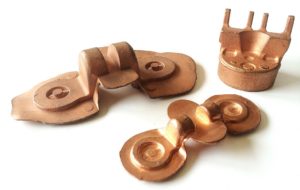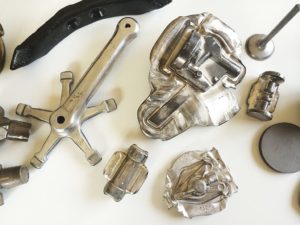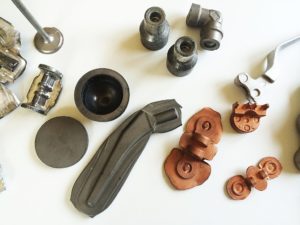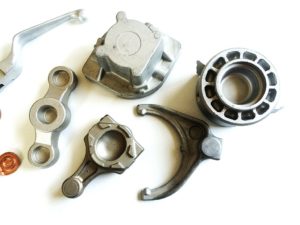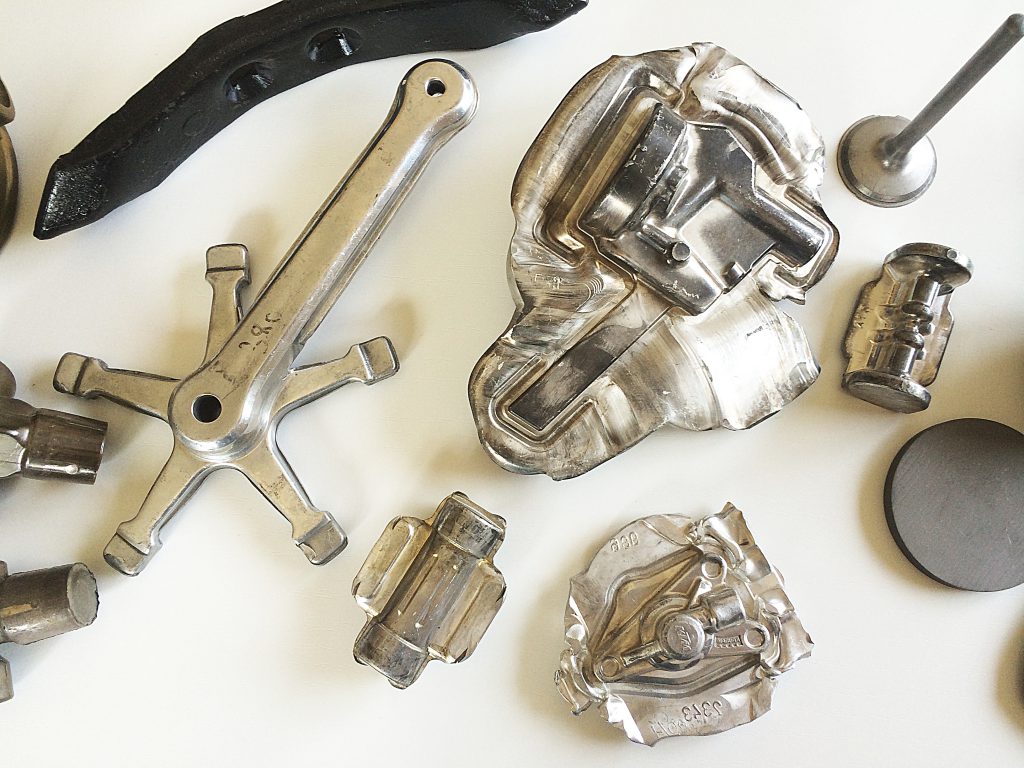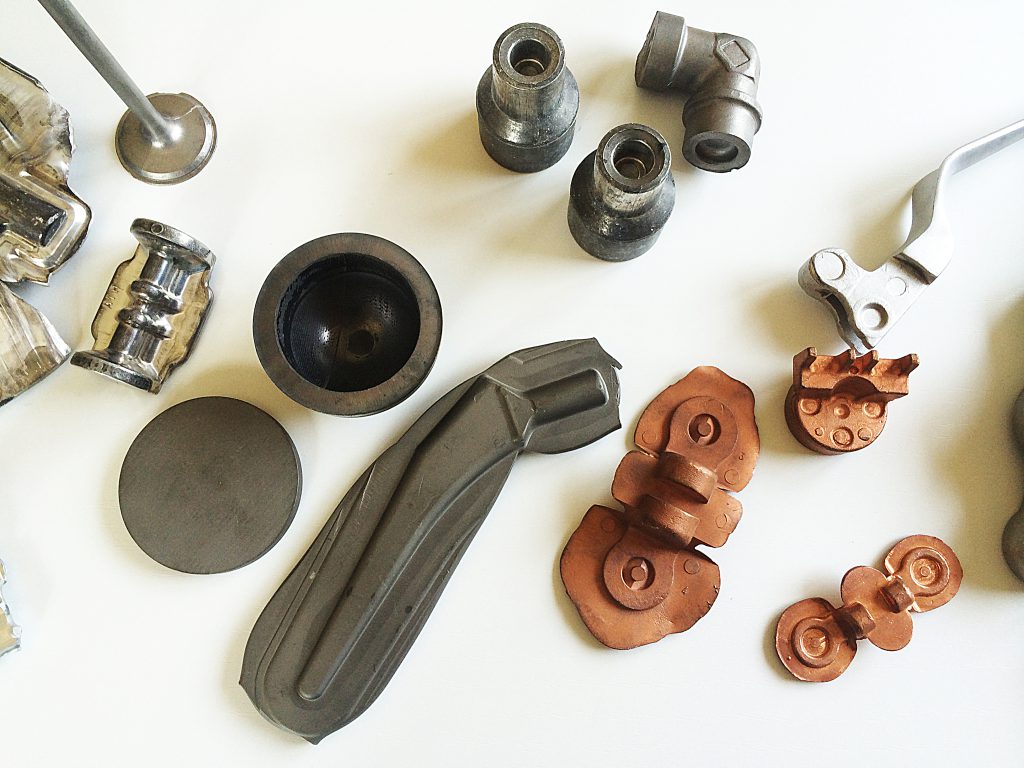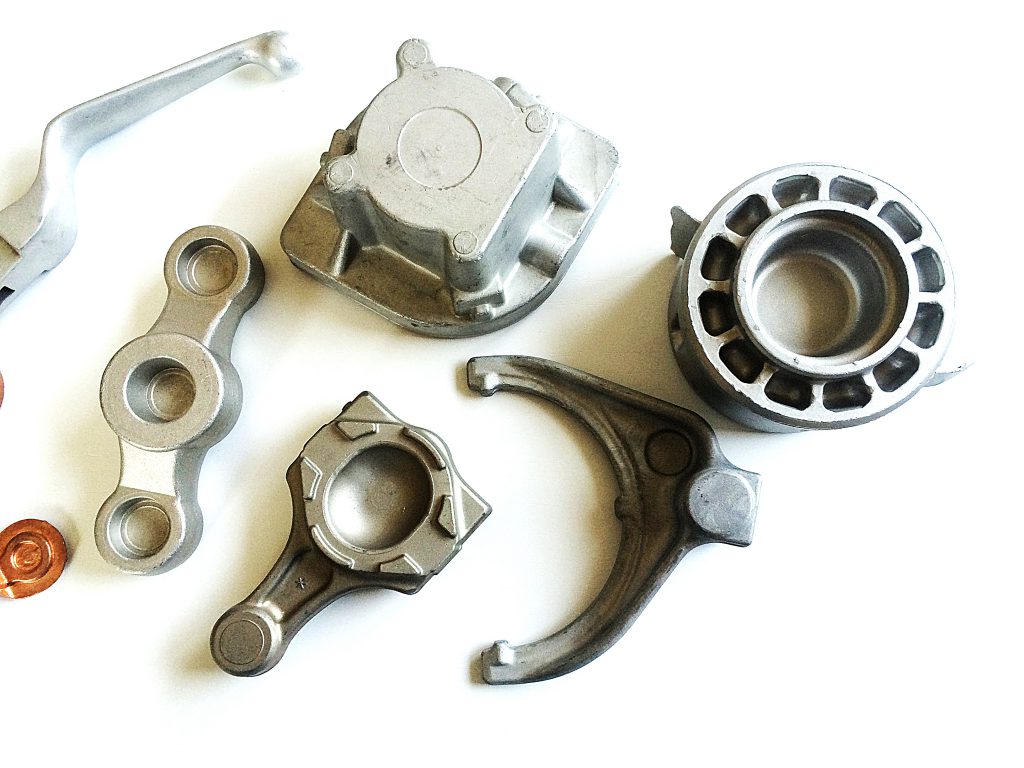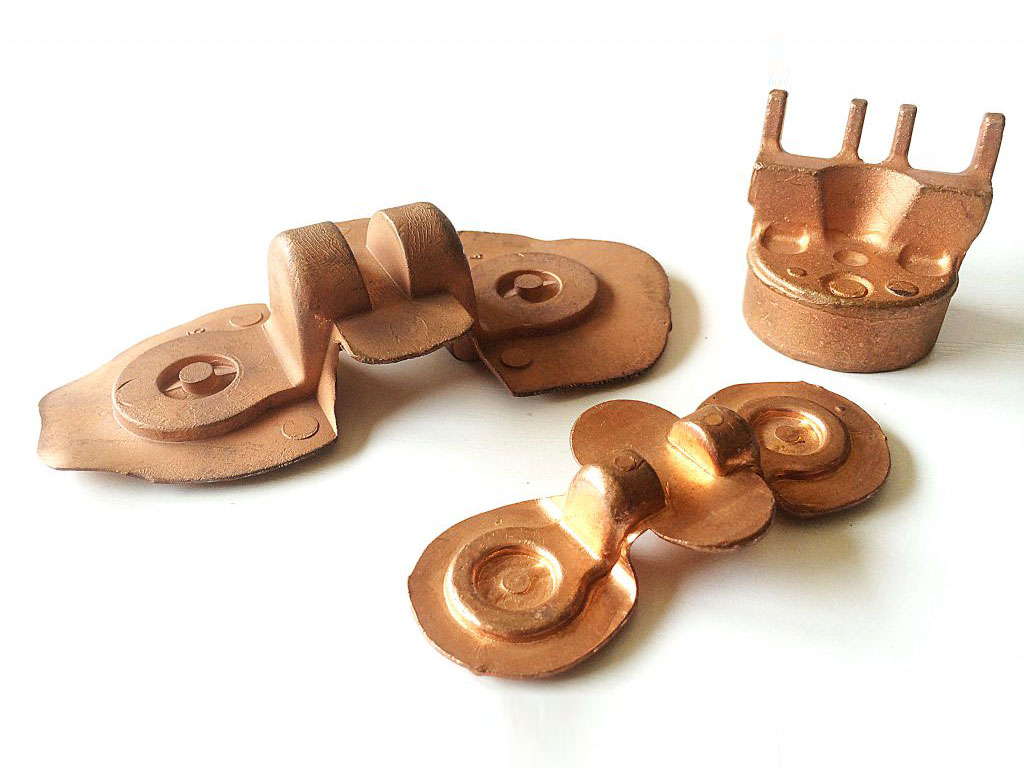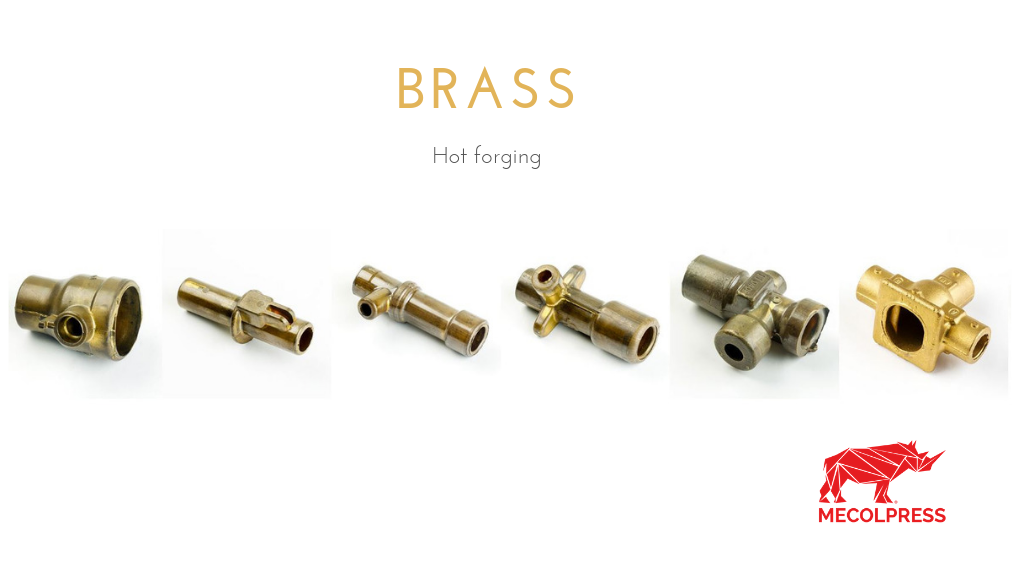
Hot forging of the brass: advantages of this material
The brass and its characteristics
The brass is an alloy composed of lead, copper, zinc and other metals, whose percentage can vary. The main component of this alloy is the copper that has a percentage between 55% and 62%. This high content of copper makes the brass a good electricity conductor and a material of easy mechanical machining because it does not wear out the cutting tools quickly as it instead happens for iron or steel.
Other typical features of the brass are:
- Recycling ease: brass is often remelt and reused to produce new parts.
- Resistance to a wide temperature range: during the hot forging process the brass is able to support, without creating particular critical issues, a moderate temperature range, this simplifies considerably the work, allowing a major tolerance in the usage of machineries.
- Lacking oxidation: During the heating phase inside the die, this metal is not subject to considerable oxidation.
- High corrosion resistance: the brass is a nonferrous alloy and therefore it does not get rusty.
Sectors of brass application
Thanks to its colour similiar to gold, the brass is used also for the realization of ornamental elements, home furnishing pieces such as for example handles and finishing for furniture, elements for clothing, including zippers and belt buckles.
Another sector of particular importance is composed by fluid control. This metal is particularly fitting for the production of valves, junction and fittings; since specific brass alloys with unimportant lead content were realized, the so produced pieces are therefore suitable to the contact with drinkable water. These special alloys are defined as Lead-free
In the end, as already underlined, the brass is a good electrical conductor and this characteristic makes him suitable for the realization of the electrical and electromechanical components, including switch parts, connections and terminals.
The hot forging process of the brass
The brass, that thanks to its particular plasticity permits to produce complicated geometrical shapes with simple processing, is hot forged as follows: when the press closes the dies with a single hit on the billet, it turns it into the part to be realized (in contrast to the steel that needs almost always a sequence of many hits). Inside the two halves of the die, that have the shape of the part to be realized, it is set down an enough quantity of metal in order to perfectly fulfill the entire cavity created by the two dies once they are overlapped and closed.
Presses for brass hot forging
For the hot forging of the brass it is possible to use continuous cycle presses or single cycle presses. The continuous cycle press is provided with a ram that moves continuously without stopping. The billets loading and the forged parts unloading is automatically adjusted by the electronic check. Instead, the single cycle press expects, at the dies reopening after a single hit, that the order for a new descent or closure of the dies must be sent by the user or by the PLC.
Mecolpress presses for the hot forging of the brass
For the hot forging of brass parts, Mecolpress proposes numerous mechanical and hydraulic presses with different characteristics according to the production typology that the customer wishes. Lately we have developed an innovative technology on our hydraulic presses for forging four parts with just a single hit that allows an important saving on the productive costs, come to discover how by reading the article!
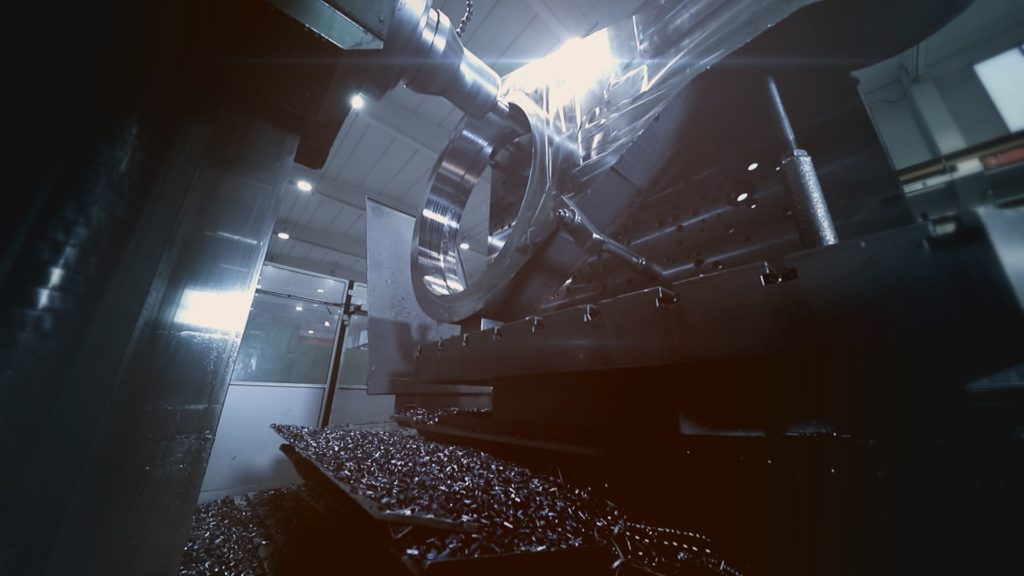
Metals hot forging process
Metals forging: hot or cold forging?
The forging by means of presses of metals commonly used for the industrial production, such as aluminum and brass, can happen in two ways.
- The first one is the cold coining, carried out, for example, on a piece that already has its own shape and that is forged through the press in such a way to calibrate it and to compact it. The cold coining is suitable, above all, for small size parts and for great production batches, such as screws. The most suitable machines for this type of process are our screw presses.
- The metals hot forging is different from the cold one because it allows to obtain high quality pieces by means of an important deformation of the starting material. With the deformation of brass, copper, aluminum by means of hot forging presses it is possible, indeed, to produce particular shapes, having very complicated structures as well. In order to achieve this forging, Mecolpress proposes, beyond the already mentioned screw presses, also the mechanical and hydraulic presses according to the different production necessities expressed by the customer.
Mechanical and hydraulic presses for the hot forging
The mechanical press can hot forge even complicated pieces. At the end of the process, the forged parts can often have some remaining flash that can be eliminated by means of a trimming machine, machinery that is part of the products range that we offer. The eccentric mechanical press with continuous cycle is recommended for the customers who have high production necessities, while the hydraulic press is more advisable for parts having very complicated shapes and that would require, otherwise, the usage of a lot of material. This type of press permits, indeed, a saving of the input material, so offering to the forger a good margin on the product cost. Moreover, by forging the parts by means of hydraulic hot forging presses, at the end of the productive cycle the parts range that can be produced without flash is much wider, thanks to a progressive and programmable application of the forces. Another characteristic of this type of presses is the flexibility, given by the wide number of available functions.
Hot forging line
For the metals forging a furnace that can be electric (induction) or gas furnace and a press are needed. This is the base productive line for the aluminum, brass, titanium and steel processing; line that can be upstream completed with a sawing machine that cuts the metal bar in billets and with a graphitizing machine, where the billets are treated with the graphite before these are inserted in the furnace, so that these absorb better the heat and that are kept lubricated. The graphitizing, that offers remarkable advantages from a productive point of view, such as a minor gas consumption in the furnace and a superior durability of the dies, is just fitting for some specific production typologies. It is not recommended, for example, for the production of parts that once forged, must be chrome plated or exposed to further particular treatments. Our sales department is at the disposal of our customers for suggesting the best forging line composition according to the product and to application field.
Hot forged metals
The customer’s choice for a specific press for his own productive cycle is based on the material typology used by the forger and on the shapes to achieve.
For the brass forging the hydraulic press is more fitting than the screw press, that is better for the forging of titanium and steel. The eccentric mechanical presses are used for all the metals, even for the copper hot forging. Our sales department is at disposal of our customers for offering the best technical solution for every specific productive situation.
For further information about hot forging machineries, please write us at sales@mecolpress.com
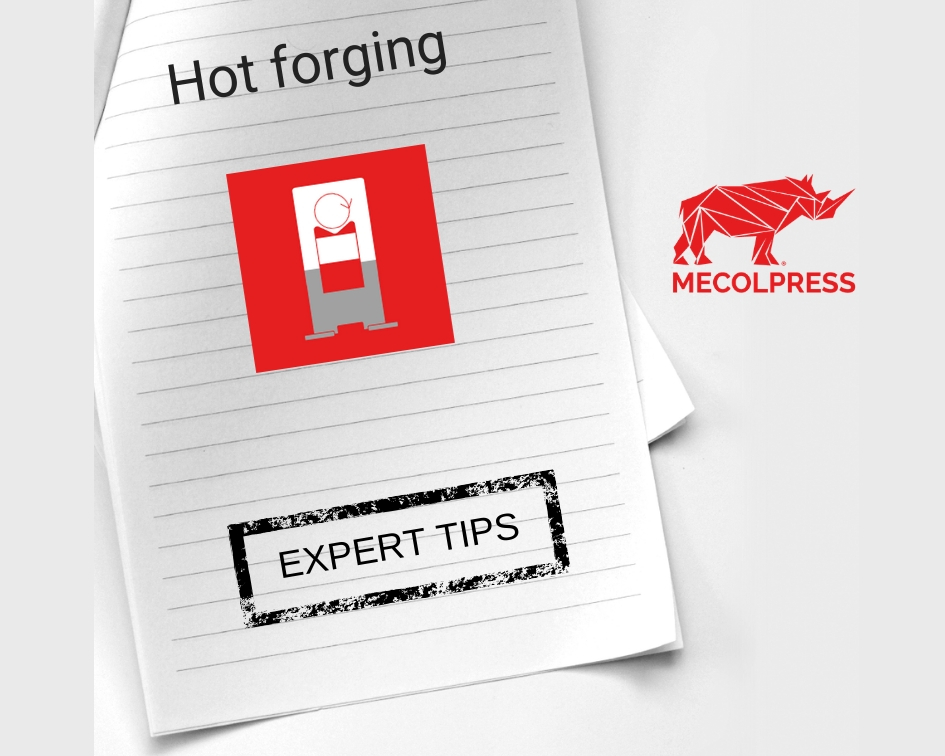
Interviews in the company: Riccardo Segreto
At Mecolpress offices we met Mr. Riccardo Segreto, person in charge of dies test and brass forging department.
What is your role in the company?
I follow the dies design for the parts forging both in brass and aluminum. Then I follow the starting test for the set-up of the die with all the necessary procedures to prepare it, to make it work properly, also suggesting the proper maintenance.
From which sector do you come from?
I have 25 years of experience in the forging sector, during which I mainly took care of brass hot forging process.
So, we are mostly speaking about brass. There are different types…
Indeed, the brass is an alloy that can be combined in many different types. Recently the tendency to produce it without lead is affirming. In this Italy follows Germany, where Ecobrass is used for a few years now, that indeed is without lead. Since the brass produced parts are largely directed to the domestic water circuits and installation, it is clear that the presence of lead represents a danger.
In the sector of taps and fittings, components, the same norms forbid the lead usage.
This is good for our health but taking off the lead from the brass alloy means to reduce its processability and this reflects on the machines, because the traditional ones are no more adequate, for example due to high cycle times or uncontrollable vibrations during the working phase.
Critical issues that arrive then to the machines. What is the answer from Mecolpress?
The company philosophy is focused on the absolute quality. Translated into concrete terms, regarding brass it means to be able to forge without flash. In this case, our hydraulic presses are very efficient. These are machines that guarantee a drastic reduction of wastes and an optimum quality of parts.
Do you speak about all parts, without differences?
Yes, the range of productions is very wide, from the ball valves to the T junctions, from components for gas plants to automotive parts. The choice is complete.
Which features contribute to the good functioning of the machine?
Reaffirming that when there is no flash some problems can be considered as to be solved, I would mention the simulation program that is a valid help for the forging of very particular parts. It is a software that, once the parametrization is given by the Mecolpress designers, shows the material flow inside the die, allowing to prevent deformation flaws in the points of impact or the brusque alterations of temperature that generate criticalities in the parts. Even if it does not replace the sensitivity of an artisan, and his experience can indicate reliably the points that need adjustments and corrections. And it allows – this is the advantage – to intervene in time.
The message of Mecolpress is above all a call to quality. How do the customers react?
Many operators of our sector are at this point convinced that our advantage incentive is the quality. They understand that to stay active on the international market, they need to be protected, and not to give up with the features for which the Italian companies are always very appreciated worldwide. It is not convenient to lose time in the battles on new orders fighting on few euros, according to us it is always better to offer a 100% quality standard. This is the distinctive characteristic of our presses and the factor that brings more satisfactions.
I mention gladly the last one: we are working hard on a test of 100.000 parts (brass sanitary taps and fittings), commissioned by a German producer that turned to us after he asked to competitors. They request to forge 100.000 parts without flash and without changing the die: we took up the challenge, but we are sure that we will win the challenge.
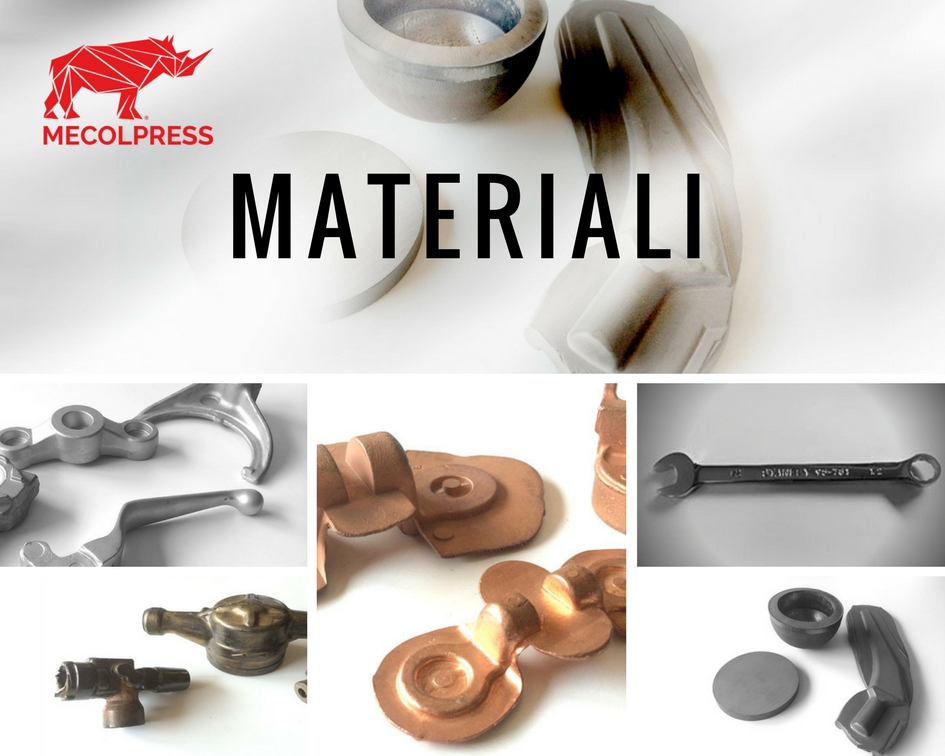
Materials Forged
Mecolpress is leader in the production of industrial presses for the hot forging of materials like:
brass, titanium, aluminium, copper and steel.
The competence of the Research and Development department of Mecolpress support our customers to obtain several goals:
- To be informed about the methodologies to optimize the production thanks to the hot forging of the parts in an efficient way, without the need of subsequent operations like trimming the flash or similar, and also in an effective way, producing a piece that is robust and perfect as the shape to which is inspired;
- To learn which are the most suitable materials for which applications and determine in which conditions the properties of the materials itself are best performing;
- To adapt the best production technics to the need of specific industry sectors, to particular countries prescriptions, according to the local laws and styles.
Mecolpress is therefore a competence centre for the hot forging of material on international level, and this also thanks to the global success that the company has reached in its history.

